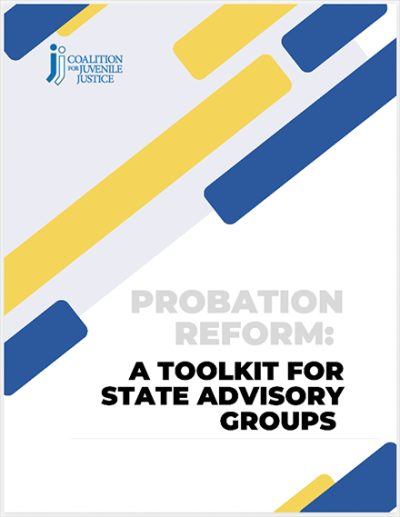Summary
Nationally, probation is the most widely used sanction for young people who come into contact with the youth justice system. However, because of the surveillance-based approach to probation and the high number of conditions placed on many young people, probation can result in young people going deeper into the system and derailing their chances for positive futures. Moreover, there is no evidence that probation practices that rely on lengthy court conditions and compliance-oriented practices are successful in improving youth behavior. In fact, research shows that traditional, surveillance-oriented probation is particularly ineffective at preventing or deterring delinquent behavior, with especially poor results for youth at low risk of rearrest.
States and communities across the country are working to transform probation using new approaches focused on youth development. As jurisdictions look to the possibility of closing youth prisons, many are reimagining the existing probation system in a way that both raises the ceiling and the floor for who is eligible: reducing the number of low-level offenses that result in probation, while opening doors and looking to probation as an alternative in more serious cases. More probation departments are reducing the number of young people placed on probation by expanding and improving available diversion programming. At the same time, communities are looking at probation as an alternative for young people with more serious charges who previously may have been placed in detention or other out-of-home placement.
Diversion efforts have been linked to several benefits including reducing rearrests or reoffending and avoiding deeper involvement with the juvenile justice system. Diversion also helps avoid harms that can come from experiences with the justice system, such as stigma and traumatization.
State Advisory Groups (SAGs) are uniquely positioned within their states to help inform, influence and support policymakers and juvenile justice practitioners as they seek to transform the use of probation. Published by the Coalition for Juvenile Justice, this tool kit aims to help SAGs better understand and support probation transformation.
These are the chapter titles:
- Getting Started: Fast Facts About Probation Transformation
- What Can Be Done Instead?
- The SAG’s Role in Promoting Juvenile Probation Transformation
- SAGs in Action: Getting Started on Probation Reform
- Partnering for Success: Working With Others to Implement Probation Reform
- Subcommittees: Finding a Home for the Work
- Getting Started: A Checklist
- Getting Started: Guided Questions to Begin Collaborations
This tool kit is designed to help states to:
- reduce probation caseloads by diverting a greater share of cases from the juvenile court system through formal court processing and any form of probation supervision; and
- refashion probation into a more strategic and effective intervention for the much smaller population of youth who will remain on supervision caseloads.







